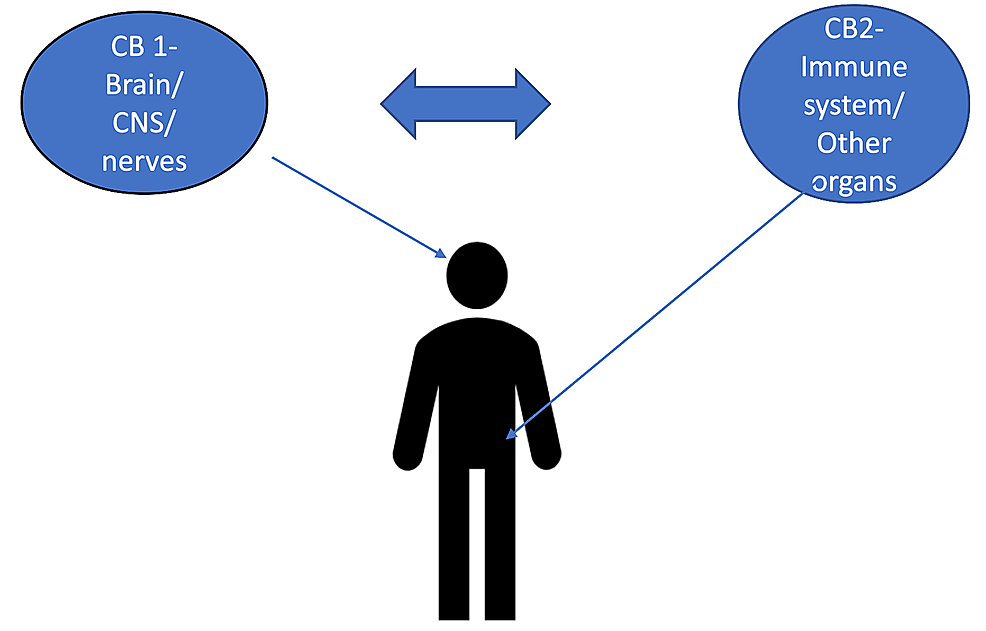 “Although studied in a few randomized controlled trials (RCTs), the efficacy of medical cannabis (MC) for chronic pain remains controversial. Using an alternative approach, this multicenter, questionnaire-based prospective cohort was aimed to assess the long-term effects of MC on chronic pain of various etiologies and to identify predictors for MC treatment success.
“Although studied in a few randomized controlled trials (RCTs), the efficacy of medical cannabis (MC) for chronic pain remains controversial. Using an alternative approach, this multicenter, questionnaire-based prospective cohort was aimed to assess the long-term effects of MC on chronic pain of various etiologies and to identify predictors for MC treatment success.
Results: 1045 patients completed the baseline questionnaires and initiated MC treatment, and 551 completed the 12 month follow-up. At one year, average pain intensity declined from baseline by 20% [-1.97 points (95%CI= -2.13 to -1.81; p<0.001)]. All other parameters improved by 10-30% (p<0.001). A significant decrease of 42% [reduction of 27mg; (95%CI= -34.89 to -18.56, p<0.001)] from baseline in morphine equivalent daily dosage of opioids was also observed. Reported adverse effects were common but mostly non-serious. Presence of normal to long sleep duration, lower body mass index (BMI) and lower depression score predicted relatively higher treatment success, whereas presence of neuropathic pain predicted the opposite.
Conclusions: This prospective study provides further evidence for the effects of MC on chronic pain and related symptoms, demonstrating an overall mild to modest long-term improvement of the tested measures and identifying possible predictors for treatment success.
Significance: This “real world” paper shows that MC mildly to modestly attenuates chronic pain and related symptoms. MC treatment can also cause frequent, but mostly non-serious adverse effects, although central nervous system (CNS)-related AEs that can impair the ability to drive vehicles are not uncommon. This study is novel in identifying possible predictors for treatment success, including normal to long sleep duration, lower BMI and lower depression scores. In contrast to current beliefs the diagnosis of neuropathic pain predicts a less favorable outcome. These findings provide physicians with new data to support decision making on recommendations for MC treatment.”
https://pubmed.ncbi.nlm.nih.gov/33065768/
https://onlinelibrary.wiley.com/doi/10.1002/ejp.1675



 “Although studied in a few randomized controlled trials (RCTs), the efficacy of medical cannabis (MC) for chronic pain remains controversial. Using an alternative approach, this multicenter, questionnaire-based prospective cohort was aimed to assess the long-term effects of MC on chronic pain of various etiologies and to identify predictors for MC treatment success.
“Although studied in a few randomized controlled trials (RCTs), the efficacy of medical cannabis (MC) for chronic pain remains controversial. Using an alternative approach, this multicenter, questionnaire-based prospective cohort was aimed to assess the long-term effects of MC on chronic pain of various etiologies and to identify predictors for MC treatment success. “The burden of chronic pain has affected many individuals leading to distress and discomfort, alongside numerous side effects with conventional therapeutic approaches.
“The burden of chronic pain has affected many individuals leading to distress and discomfort, alongside numerous side effects with conventional therapeutic approaches. “Cannabinoids help in pain treatment through their action on CB1 and CB2 receptors.
“Cannabinoids help in pain treatment through their action on CB1 and CB2 receptors. “Recent years have seen an increase in the adoption of cannabinoid medicines, which have demonstrated effectiveness for the treatment of chronic pain.
“Recent years have seen an increase in the adoption of cannabinoid medicines, which have demonstrated effectiveness for the treatment of chronic pain. “Recent studies have shown that cannabidiol (CBD) could have a great therapeutic potential for treating disorders such as chronic pain and anxiety. In the target article, the authors propose that CBD modulates serotonergic transmission and reverses allodynia and anxiety-like behaviour in a rat model of neuropathic pain. Furthermore, this study shows an antinociceptive effect mediated by TRPV1 and partially by 5-HT1A receptors, as well as an anxiolytic effect mediated by 5-HT1A receptors.”
“Recent studies have shown that cannabidiol (CBD) could have a great therapeutic potential for treating disorders such as chronic pain and anxiety. In the target article, the authors propose that CBD modulates serotonergic transmission and reverses allodynia and anxiety-like behaviour in a rat model of neuropathic pain. Furthermore, this study shows an antinociceptive effect mediated by TRPV1 and partially by 5-HT1A receptors, as well as an anxiolytic effect mediated by 5-HT1A receptors.” “Globally, chronic pain is a major therapeutic challenge and affects more than 15% of the population. As patients with painful terminal diseases may face unbearable pain, there is a need for more potent analgesics.
“Globally, chronic pain is a major therapeutic challenge and affects more than 15% of the population. As patients with painful terminal diseases may face unbearable pain, there is a need for more potent analgesics. “Cannabinoid CB2 receptor (CB2) agonists are potential analgesics void of psychotropic effects.
“Cannabinoid CB2 receptor (CB2) agonists are potential analgesics void of psychotropic effects. “Precise cannabis treatment dosing remains a major challenge, leading to physicians’ reluctance to prescribe medical cannabis.
“Precise cannabis treatment dosing remains a major challenge, leading to physicians’ reluctance to prescribe medical cannabis.